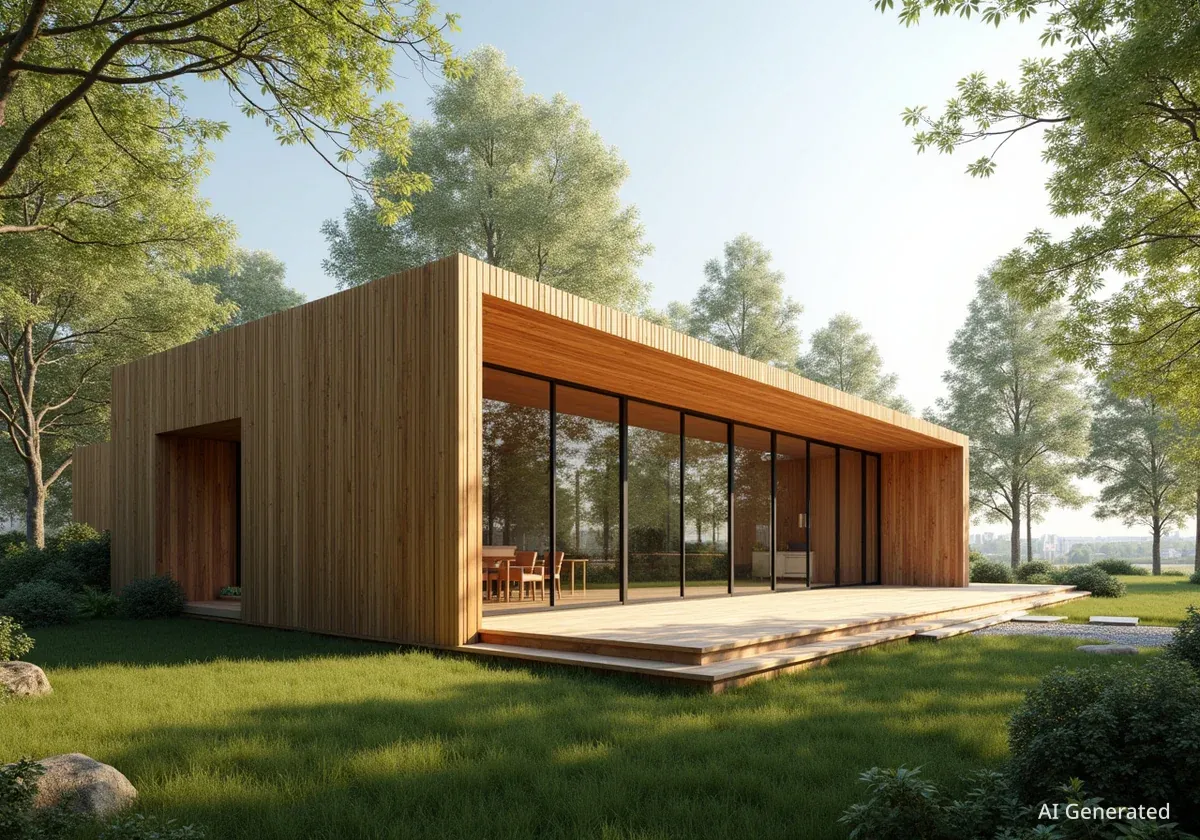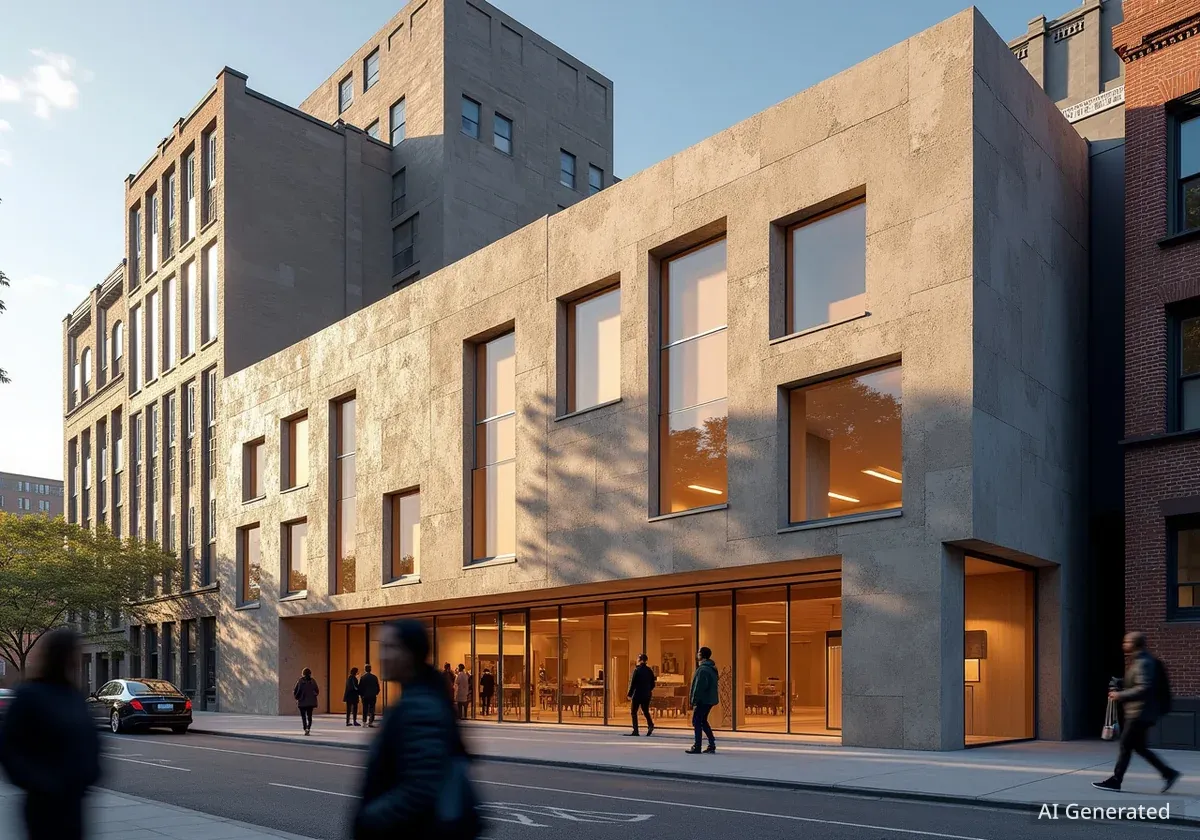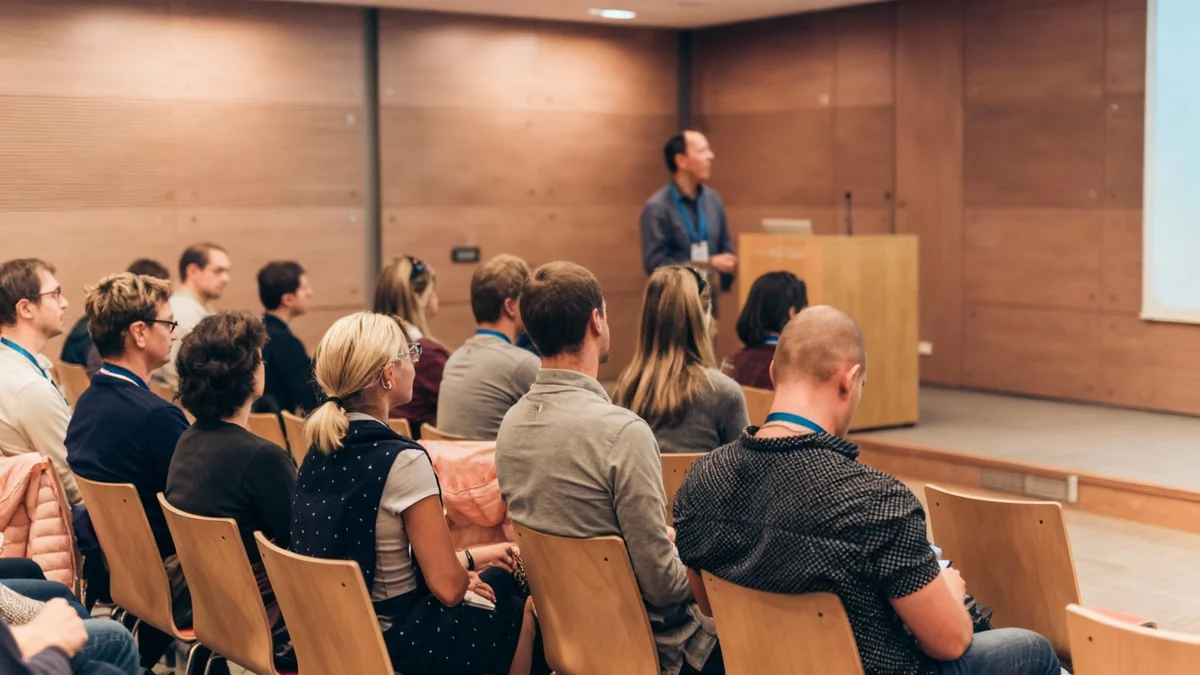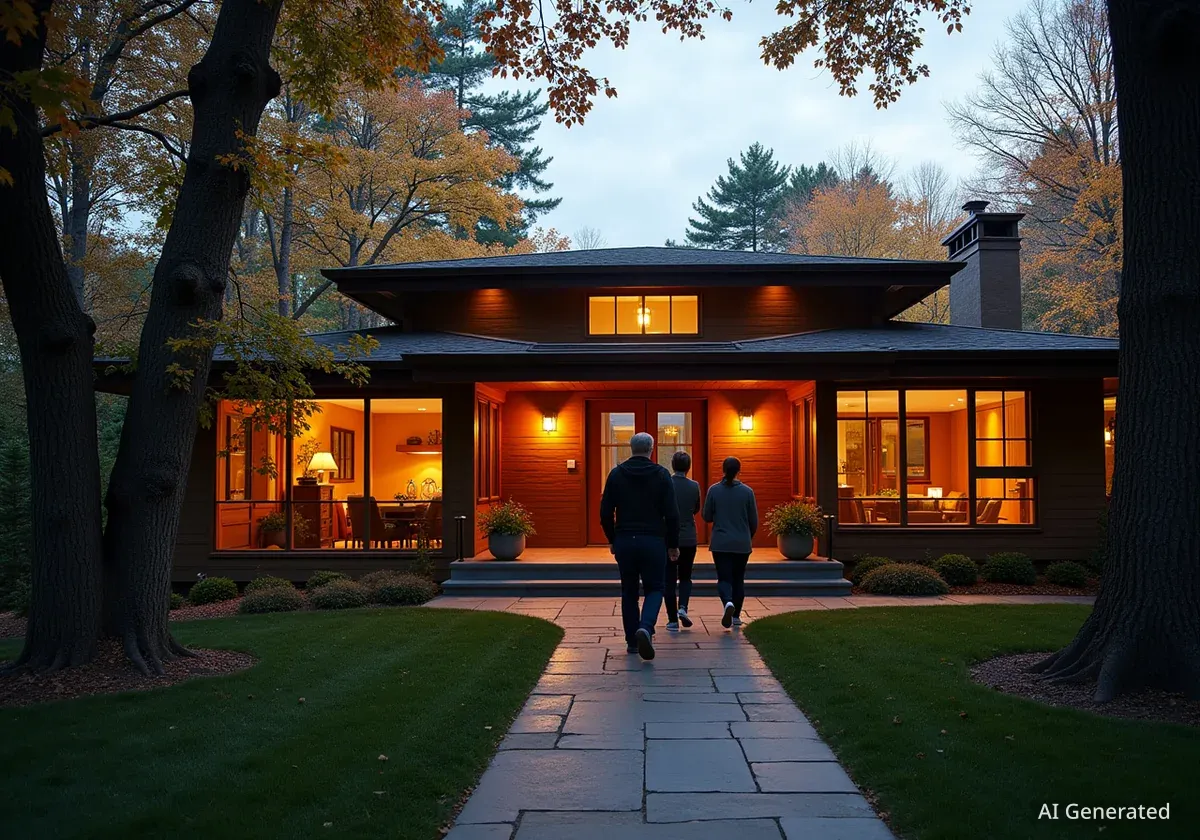Terra Mater Factual Studios, an internationally recognized film production company known for its nature documentaries, recently completed a significant expansion and reorganization of its Vienna headquarters. The project, led by Austrian-Finnish architects BERGER+PARKKINEN, aimed to accommodate staff growth and integrate advanced film production technology while maintaining a strong focus on sustainability and innovation.
The expansion involved the construction of a new solid wood pavilion, a redesigned entrance area with an employee lounge, and a hidden cooling center for server infrastructure. This development reflects Terra Mater's commitment to eco-friendly practices and modern architectural design within its historic Hietzing villa setting.
Key Takeaways
- Terra Mater Factual Studios expanded its Vienna headquarters.
- BERGER+PARKKINEN architects led the design and construction.
- The project included a new solid wood pavilion and technical infrastructure.
- Sustainability and innovation were core design principles.
- The design integrates with a historic Art Nouveau villa and its garden.
Sustainable Expansion in Historic Setting
Terra Mater Factual Studios operates from a historic Art Nouveau villa in Vienna-Hietzing. This location includes several outbuildings. The villa itself saw expansion in the late 1980s. In 2003, a glass bridge-like entrance and a meeting cube were added, facing the garden. The latest adaptation was necessary to support the company's continued growth in staff numbers.
A key objective was to seamlessly integrate the extensive technical infrastructure required for modern film production. This integration presented a significant challenge, especially given the project's commitment to sustainable building practices. The architects focused on creating a design that respected the existing historical context while introducing modern, eco-conscious elements.
Project Facts
- Client: Terra Mater Factual Studios
- Location: Vienna-Hietzing, Austria
- Architects: BERGER+PARKKINEN
- Primary Material: Solid Wood
- Completion: Recently completed
Integrating Technology with Nature
The new construction includes a two-story pavilion that houses offices and meeting rooms. This structure is built primarily from solid wood. The design team faced a particular challenge in embedding the complex technical installations within this wooden framework. Despite these technical demands, the project prioritized sustainability.
The architects also created a new entrance area. This space now features an employee lounge, designed to foster a more welcoming and collaborative environment. Furthermore, a cooling center for the film technology servers was developed. This crucial technical facility is designed to be undetectable from the outside, preserving the aesthetic of the property.
"The goal of the new adaptation was to accommodate the further growth of the staff and, at the same time, to incorporate the large technical infrastructure of the film production into the building." – BERGER+PARKKINEN Architects
According to the architects, the positioning of the new building on the site ensures that a significant "house tree" in the garden retains its visual impact and prominence. This detail underscores the project's respect for the natural environment surrounding the studio.
Architectural Design and Composition
The new two-story wooden building connects directly to an existing extension of the villa. This connection creates a comprehensive presence within the garden area. The design achieves this through two distinct, yet related, structures. The first is the constructive timber building itself, which forms the primary spatial element. The second is an outer shell, a metal 'Rank' structure that surrounds the building.
These two structures, while functioning autonomously, share a common basic grid. Their rhythm and dimensions are coordinated, creating a cohesive visual effect. The integration of building services, such as wiring and plumbing, into the solid wood structure required a clear and precise tectonic approach. This ensured flexibility for future spatial subdivisions.
Background on Terra Mater
Terra Mater Factual Studios specializes in producing high-quality nature films and documentaries. Their work often involves extensive technical requirements for filming, editing, and post-production. The company's expansion reflects its continued success and the need for advanced facilities to support its creative output.
Interior and Exterior Features
The interior spaces are defined by the visible wooden structure, including wooden walls and ceilings. These surfaces have been glazed white. This white glazing enhances the perception of the green outdoor spaces, bringing a sense of nature indoors. The use of wood throughout the interior aligns with the project's sustainable goals and creates a warm, natural atmosphere.
The exterior 'Rank' structure wraps around the entire building. Its geometric, ornamental shaping gives the building a unique identity. This structure is designed to interact with climbing plants and tendrils. In the near future, these plants are expected to cover the full height of the building. The specific plant choices ensure a long-term cyclical change in the building's appearance, harmonizing with the changing seasons.
- Interior: Visible wooden structure, white-glazed wooden walls and ceilings.
- Exterior: Metal 'Rank' structure designed for climbing plants.
- Sustainability: Solid wood construction, integration with natural environment.
This interplay between the building and its natural surroundings exemplifies the project's core philosophy. The architectural office BERGER+PARKKINEN successfully implemented a holistic approach to sustainable building in this project. They considered the client's needs, the building's purpose, and innovative planning methods to create a modern, eco-friendly expansion for Terra Mater Factual Studios.
Sustainability and Innovation at the Core
The entire building ensemble was developed with a strong emphasis on sustainability. The architects reinterpreted the existing structures on the tree-covered property. This integration into the landscaped Hietzing villa area was a key design element. The project demonstrates how modern construction can coexist with and enhance a historic, green environment.
The choice of solid wood as the primary construction material is a direct reflection of the commitment to sustainability. Wood is a renewable resource, and its use often contributes to a lower carbon footprint compared to other building materials. The design also considered the long-term environmental impact through its integration of natural elements like climbing plants.
Environmental Impact
Using solid wood for construction can significantly reduce the environmental impact of a building. Wood sequesters carbon, and if sourced sustainably, it is a renewable material. This aligns with modern green building standards and Terra Mater's nature-focused mission.
The project showcases an innovative planning approach by BERGER+PARKKINEN. They managed to balance the functional requirements of a growing film production company with strict sustainability demands. This balance resulted in a facility that is both technologically advanced and environmentally responsible.
The transformation of Terra Mater's headquarters serves as an example of how architectural design can support organizational growth while adhering to high standards of environmental stewardship. The new building provides a modern, flexible workspace that is deeply connected to nature and designed for long-term sustainability.




